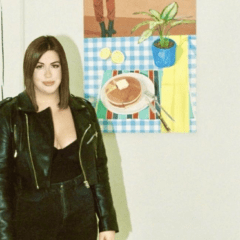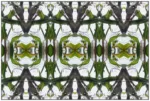In Becoming a Specter, Daniel W. Coburn calls attention to the play of presence and absence that renders every photographic subject ghostly. One of the finalists of The Print Center’s 92nd ANNUAL International Competition currently receiving a solo exhibition, Coburn composes images of human figures ambivalently merging with their landscapes. Eleven of the twelve untitled black-and-white photographs on display here feature bodies and faces on the threshold between visibility and invisibility, darkness and light, water and air. In the twelfth, a ball is suspended in midair as it bounces down an empty beach, kicked or tossed by some unseen entity—the trace is all that remains.
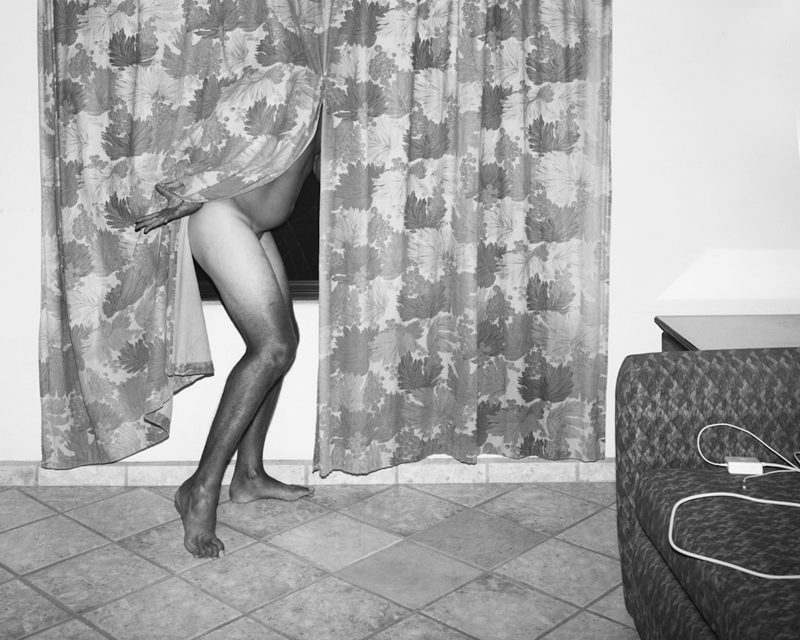
Against Visibility
In On Photography, Susan Sontag writes that “To photograph is to appropriate the thing photographed. It means putting oneself into a certain relation to the world that feels like knowledge—and, therefore, like power.” Coburn seems intent on abdicating this position of power, choosing instead to pursue subjects that elude the camera’s gaze or throw up barriers to their appropriation.
Some of these barriers are comic. In one photograph, a naked man is partially concealed behind a pair of drapes in a domestic space. We cannot see his face, but the way the drapes are parted immediately draws our focus to the curve of his paunch and the high-contrast paleness of his untanned haunches. Whether the subject is warier of exposure to the camera or to whatever prying gazes wait for him outside the window is left ambiguous by his posture. Either way, he is made vulnerable. In another photograph, a woman outfitted in a makeshift suit of floral-patterned gift-wrapping paper stands awkwardly posed on one leg, hands tensed and fingers splayed, as though she is trying to flatten out and blend in with the dense stand of flowering shrubbery behind her. In this she is unsuccessful. By depicting her in two dimensions, however, Coburn creates a continuity between the natural and artificial textures of the composition. Here, to photograph is to collude in the disappearance of the thing photographed, even while gently mocking the impulse to disappear.
In other images, the landscape seems to be in collaboration with the human figure, with the one adapting to the forms and needs of the other; a woman stretches out face-down on the sand under a palm tree with the shadow of a branch following the curve of her spine perfectly. Water mitigates the camera’s relationship to the subject in several of the photographs. A shallowly submerged man is dappled by the sunlight reflecting off the water, his face obscured, the contours of his body indistinct. A woman’s face in close-up is beaded with sweat, her mouth hanging open and head tilted back, whether in illness or orgasm or sleep it is impossible to say. A man playfully sprays water from a garden hose toward the camera and the droplets become incandescent as they catch the flash. One photograph captures only the cannonball-size splash after someone—or something—has plunged into a swimming pool.
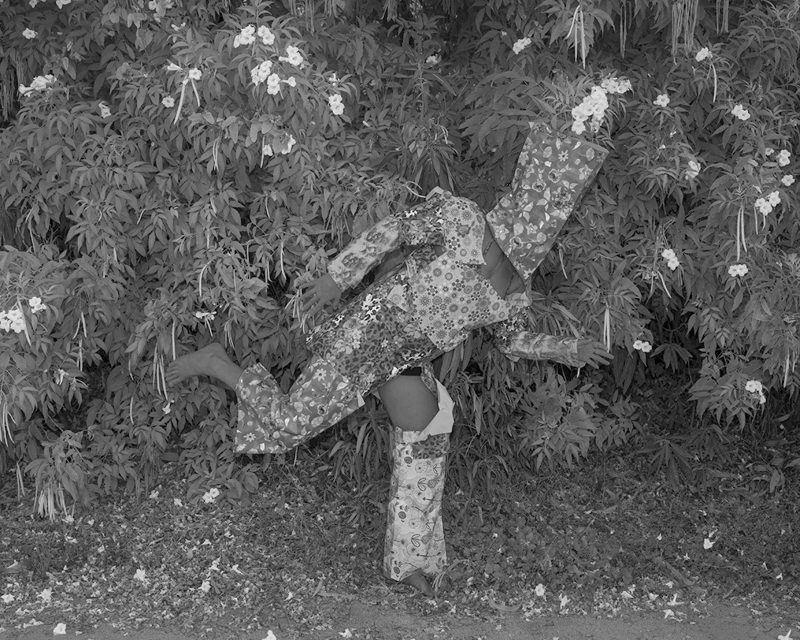
Untidy Subjects
A few of Coburn’s photographs are pleasantly conventional enough that they wouldn’t seem out of place on a greeting card, but the best of them are rough, untidy, and mysterious. A carelessly-uncoiled laptop charger assumes an odd prominence in the foreground. Dirty dishes in the kitchen sink pull focus from an otherwise arresting image of a man vanishing into a cloud of flour or smoke. Ubiquitous piercings and tattoos undercut the Edenic associations these photographs of men and women harmonizing with the natural world might otherwise inspire.
What we do not know about these subjects is at least as compelling as what we do know about them. Every photograph is a monument to an absence, but Coburn takes an unusual delight in compromising the presence of his subjects. He even makes his own body the subject of several haunting images, relinquishing any lingering authority to which he might have laid claim as an objective observer standing outside the frame. Instead, he becomes an object himself. The defining absence of this series, then, is ultimately the one behind the camera. If the photographer has become the photographed, what is the image left behind but the vision of a specter?
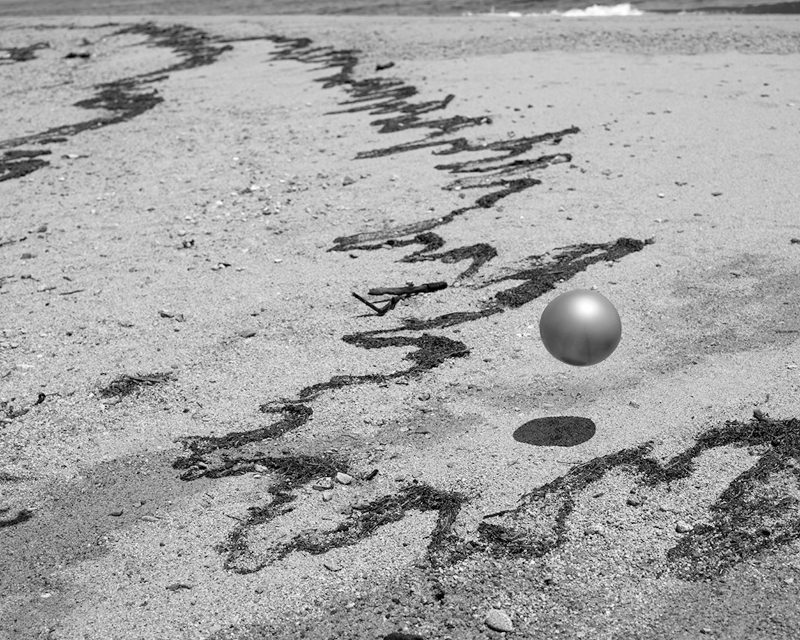
“Becoming a Specter” is on view at The Print Center form May 18th-August 4th 2018




